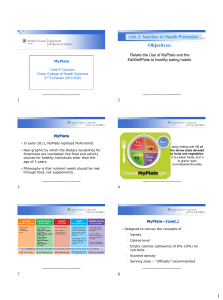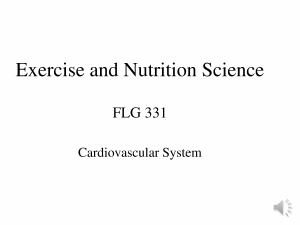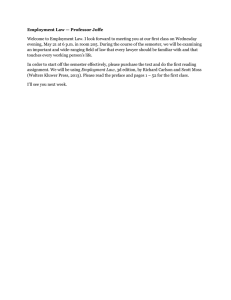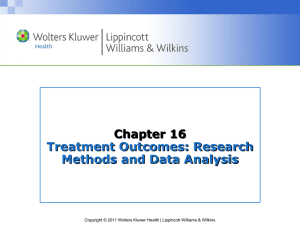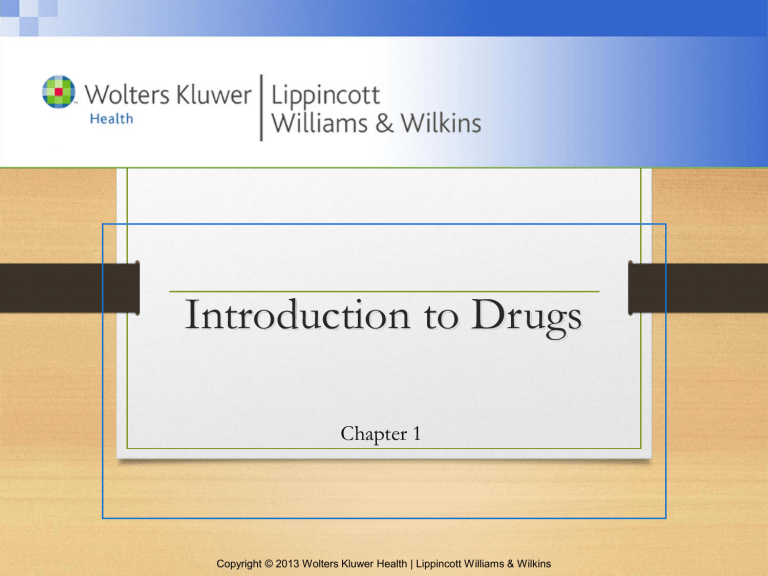
Introduction to Drugs Chapter 1 Copyright © 2013 Wolters Kluwer Health | Lippincott Williams & Wilkins Pharmacology • Pharmacology is the study of the biological effects of chemicals. • Drugs are chemicals that are introduced into the body to cause some sort of change. • Nurses deal with pharmacotherapeutics, or clinical pharmacology. • Some drug effects are therapeutic, or helpful, but others are undesirable or potentially dangerous. Copyright © 2013 Wolters Kluwer Health | Lippincott Williams & Wilkins DIVISIONS • PHARMACODYNAMICS deals with the biochemical & physiological effects of drugs how the drug affects the body • PHARMACOKINETICS absorption, distribution, biotransformation & excretion of drugs how the body acts on the drug Copyright © 2013 Wolters Kluwer Health | Lippincott Williams & Wilkins DIVISIONS • PHARMACOTHERAPEUTICS how drugs maybe used in the treatment of disease which drug would be most or least appropriate to use for a specific disorder what dose of drug would be required • PHARMACOGNOSY study of drugs derived from natural sources • TOXICOLOGY study of poisons & poisonings Copyright © 2013 Wolters Kluwer Health | Lippincott Williams & Wilkins Nurse’s Responsibility • • • • • Administering drug Assesses for adverse drug effects Intervening to make the drug regimen more tolerable Providing patient teachings about drugs and the drug regimen Monitoring and prevention of medication errors Copyright © 2013 Wolters Kluwer Health | Lippincott Williams & Wilkins Sources of Drugs • Natural Sources • Plants • Synthetic version of the active chemical found in a plant • Main component of the growing alternative therapy movement • eg. Digitalis purpurea => digitalis • eg. Poppy plant => opiates, morphine, codeine Copyright © 2013 Wolters Kluwer Health | Lippincott Williams & Wilkins Sources of Drugs (cont.) • Natural Sources (cont.) – Animal products • Used to replace human chemicals that are not produced because of disease or genetic problems • Genetic engineering • Many of these preparations are now created synthetically • eg. cow & pig pancreas tissue => insulin Copyright © 2013 Wolters Kluwer Health | Lippincott Williams & Wilkins Sources of Drugs (cont.) • Natural Sources (cont.) – Inorganic compounds • Salts of various elements can have therapeutic effects in the human body • eg. aluminum, fluoride, iron, gold • Synthetic Sources – Genetic engineering alter bacteria to produce chemicals that are therapeutic and effective – Original prototypes – eg. Escherichia coli Copyright © 2013 Wolters Kluwer Health | Lippincott Williams & Wilkins Drug Evaluation • Preclinical Trials • Chemicals tested on laboratory animals • Phase I Studies • Chemicals tested on human volunteers • Phase II Studies • Drug tried on informed patients • Phase III Studies • Drug used in vast clinical market • Phase IV Studies • Continual evaluation of the drug Copyright © 2013 Wolters Kluwer Health | Lippincott Williams & Wilkins PHASES of DRUG EVALUATION 1. PRE-CLINICAL TRIALS determine whether they have presumed effects in living tissues to evaluate any adverse effect at the end some chemicals will be discarded because : 1. chemical lacks therapeutic activity when used with living animals 2. too toxic to living animals to be worth the risk of developing into drug 3. highly teratogenic 4. safety margins are so small that chemical would not be useful in the clinical setting Copyright © 2013 Wolters Kluwer Health | Lippincott Williams & Wilkins 1. PHASE I STUDIES test potential drugs on healthy human subjects 2. PHASE II STUDIES test potential drugs on patients who have the disease the drugs are designed to treat Copyright © 2013 Wolters Kluwer Health | Lippincott Williams & Wilkins 1. PHASE III STUDIES test drugs in the clinical setting prescribers are informed of all known reactions to the drug 2. PHASE IV STUDIES continual evaluation prescribers are obligated to report any untoward adverse effects associated with the drug Copyright © 2013 Wolters Kluwer Health | Lippincott Williams & Wilkins Legislation Copyright © 2013 Wolters Kluwer Health | Lippincott Williams & Wilkins Pregnancy Categories Copyright © 2013 Wolters Kluwer Health | Lippincott Williams & Wilkins Controlled Substances • The Controlled Substances Act of 1970 – Control over the coding of drugs and the enforcement of these codes to the FDA and the Drug Enforcement Agency (DEA), a part of the U.S. Department of Justice. • Prescription, distribution, storage, and use of these drugs are closely monitored. • Local policies and procedures might be even more rigorous. Copyright © 2013 Wolters Kluwer Health | Lippincott Williams & Wilkins Controlled Substances (cont.) Copyright © 2013 Wolters Kluwer Health | Lippincott Williams & Wilkins Generic Drugs • Chemicals that are produced by companies involved solely in the manufacturing of drugs • Bioavailability of the drug • “Dispensed as written” – Important in drugs that have narrow safety margins Copyright © 2013 Wolters Kluwer Health | Lippincott Williams & Wilkins Over-the-Counter Drugs • Products that are available without prescription for selftreatment of a variety of complaints. • Some of these agents were approved as prescription drugs. • Later were found to be very safe and useful for patients (example: loratidine). • Many of these drugs were “grandfathered.” Copyright © 2013 Wolters Kluwer Health | Lippincott Williams & Wilkins Over-the-Counter Drugs (cont.) • Nurses should consider several problems related to OTC drug use: • Taking these drugs could mask the signs and symptoms of underlying disease, making diagnosis difficult. • Taking these drugs with prescription medications could result in drug interactions and interfere with drug therapy. • Not taking these drugs as directed could result in serious overdoses. Copyright © 2013 Wolters Kluwer Health | Lippincott Williams & Wilkins Sources of Drug Information • Drug Label • Drug labels have specific information that identifies a specific drug • Understanding how to read a drug label is essential • Package Insert • Prepared by the manufacturer • Contains all of the chemical and study information that led to the drug’s approval • Difficult to understand and read Copyright © 2013 Wolters Kluwer Health | Lippincott Williams & Wilkins Sources of Drug Information (cont.) • Reference Books • Physician’s Drug Reference (PDR) • Drug Facts and Comparisons • AMA Drug Evaluations • Lippincott’s Nursing Drug Guide (LNDG) • Journals • Internet Copyright © 2013 Wolters Kluwer Health | Lippincott Williams & Wilkins

